Stop Sudah English-revised-March2012 - International Center for ...
Stop Sudah English-revised-March2012 - International Center for ...
Stop Sudah English-revised-March2012 - International Center for ...
Create successful ePaper yourself
Turn your PDF publications into a flip-book with our unique Google optimized e-Paper software.
as experts who supported the process of analysis and report writing. Five human rights workers from the<br />
National Women’s Commission and ICTJ (the <strong>International</strong> <strong>Center</strong> <strong>for</strong> Transitional Justice) facilitated the<br />
process of education about documentation <strong>for</strong> the documenters and accompanied the team during the<br />
documentation process.<br />
1.2. Mandate of the Documentation Team<br />
Through intensive discussions the Documentation Team agreed on the scope of work as follows:<br />
• Conduct fact-finding and document cases of violence against women and gender-based human rights<br />
violations experienced by Papuan women during the four decades from 1963 to 2009;<br />
• Conduct analysis of cases of violence against women and human rights abuses of Papuan women. The<br />
critical and in-depth analysis used a gender and human rights perspective, and referred to the<br />
Constitution, laws and related national policies as well as relevant international laws;<br />
• Prepare a documentation report complete with recommendations. The agencies that conducted the<br />
documentation will submit this report to the MPR through the launch of a public <strong>for</strong>um attended by<br />
state administration institutions at the provincial level in Papua and West Papua. The Documentation<br />
Team will also lead the process <strong>for</strong> implementation of recommendations by the government.<br />
1.3. Scope<br />
Given the breadth and complexity of the problem of violence against Papuan women, violations of their<br />
human rights, Papua's vast geographical area, and our limitations of time and resources, we agreed to limit<br />
the scope of this documentation, namely the period covered by the documentation covers the initial<br />
integration of West Irian into the Republic of Indonesia until the enactment of Special Autonomy (1963-<br />
2009). Cases of violence against women and human rights violations chosen <strong>for</strong> documentation were<br />
priority cases that met specific criteria (large impact; able to illustrate events related to other contexts); cases<br />
associated with major events; cases not yet revealed in existing human rights reports and that can<br />
complement these human rights reports. The cases documented were cases of violence and human rights<br />
violations of women that occurred in the domestic sphere (family) and in public in the context of extractive<br />
industries, entertainment, militarism, culture, development policy, and so <strong>for</strong>th. This documentation is<br />
expected to explore the link between the cases and these contexts. Documentation locations covered<br />
almost all of Papua and West Papua Provinces, including Manokwari and Sorong; Biak and Nabire;<br />
Jayapura City/District, Sarmi, Keerom; Mimika; Jayawijaya, Puncak Jaya and Yahukimo; and the regions of<br />
Merauke, Boven Digoel, and Mappi.<br />
1.4. Documentation Method and Process<br />
The search <strong>for</strong> field data began with identification of women victims as the main sources of in<strong>for</strong>mation<br />
about cases that occurred in particular contexts in the regions selected <strong>for</strong> documentation. The docuemnter<br />
teams, that comprised two to three local documenters and one person from the team of facilitators, went to<br />
the field to interview and record (in writing and/or with audio tapes) the experience of victims. Interviews<br />
were conducted using a number of guiding questions based on a documentation instrument that team<br />
members had developed together. The documenters expected to get complete and in-depth in<strong>for</strong>mation<br />
from the narratives of women victims about the kind and extent of violence that victims experienced, the<br />
extent of its influence on the lives of victims and their families (the destructive <strong>for</strong>ce of violence on the<br />
victim), how the victims managed to escape or cope with the violence and its impact, the victims’ ability to<br />
survive, and the hopes of women victims <strong>for</strong> their futures (and those of their families/communities). The<br />
gender perspective we used ensured that we did justice to the victims and were not limited by a gender bias<br />
that often obscures the truth as seen from the point of view and experiences of women victims. To<br />
supplement in<strong>for</strong>mation from women victims, especially related to the context of cases they experienced,<br />
ENOUGH IS ENOUGH! 2



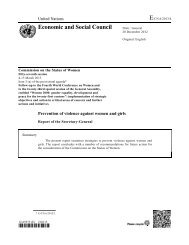
![IANSA [PDF, 2MB] - PeaceWomen](https://img.yumpu.com/25206379/1/190x123/iansa-pdf-2mb-peacewomen.jpg?quality=85)
![Commitments Sample [PDF, 93KB] - PeaceWomen](https://img.yumpu.com/25206331/1/190x245/commitments-sample-pdf-93kb-peacewomen.jpg?quality=85)


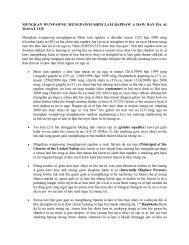
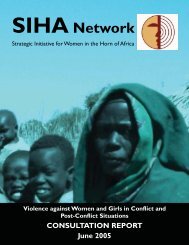



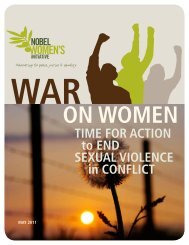
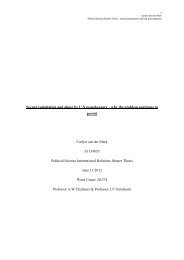

![A Toolkit for Advocacy and Action [PDF, 260KB] - Peace Women](https://img.yumpu.com/25205989/1/190x245/a-toolkit-for-advocacy-and-action-pdf-260kb-peace-women.jpg?quality=85)